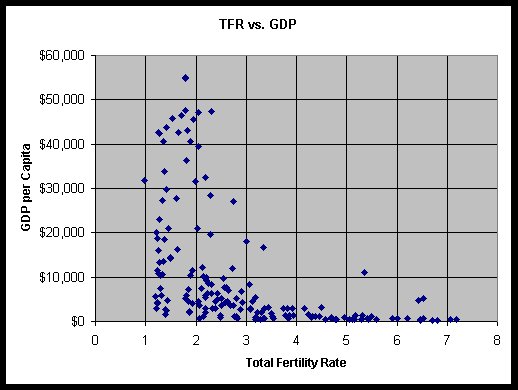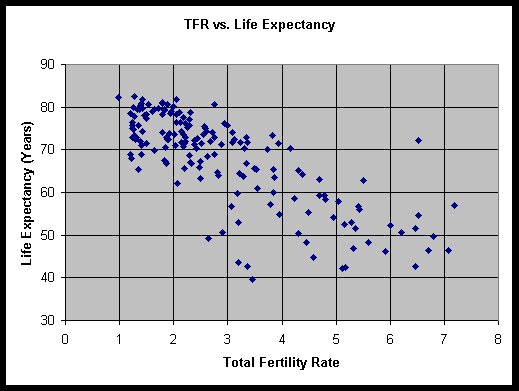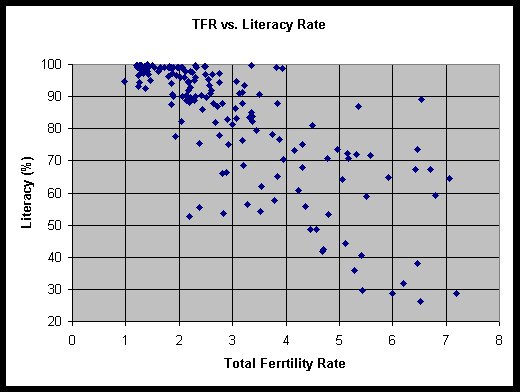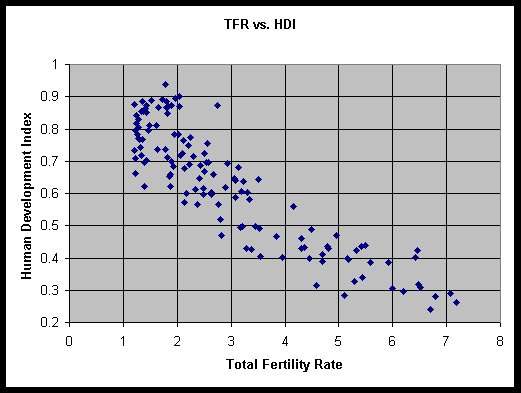|
Recently
I've been thinking about world population again. Here are some of the
things that have come up.
The first thought is that "we" (as in the aggregate species h. Sap) are
not rational creatures. We are instead rationalizing creatures who make
most of our decisions unconsciously, based on a stew of emotions and
heuristics drawn from our previous experience. When a decision emerges
fully formed into our conscious mind we then dress it up with
post-facto justifications designed to preserve the precious illusion of
our rationality. We do show some signs of rationality on an individual
level, but these signs are generally submerged by herding behaviours as
our numbers increase.
The point of this observation is that it seems vanishingly unlikely
that we ever consciously plan our cultural environment. Our collective
experience, expressed as culture and civilization, is probably better
understood as a self-organizing, complex adaptive system. When seen in
that light it seems clear that we do not deliberately plan many of its
overarching qualities. Instead, they arise on their own out of the
incredible complexity of 6.8 billion people each following their
individual paths of least resistance to various local minima in the
cultural fitness landscape.
As a result, the notion that we might ever design a rationally
structured future based on reason, logic and the projection of observed
trends is a chimera. I can see two reasons why people might object to
any attempt to implement such a vision. The first is that such a clean,
orderly vision has too many unpleasant authoritarian resonances for
most people. The second is that asking anyone to do anything that
deviates from their path of least resistance from one local minimum to
the next is doomed to failure because of our herding instincts.
The next thought I'd like to throw in is that population really can't
be separated from activity. A civilization that preserves all that we
have come to define as such would have to be limited to a virtual
handful of people if overshoot is to be avoided. So, as much as we
would like to take a single-factor, population-only view of the
situation, I think it's impossible to effectively separate the "PA"
terms of IPAT.
Reducing consumption, when continued consumption is seen as possible
(even when its reduction is understood to be necessary), violates that
"path of least resistance" principle I wrote about above and will
therefore be rejected out of hand by our unconscious decision-making
processes. That reaction means that the idea is a political non-starter.
So in the face of this, what do I suggest we do? The mischievous
anarchist in me wants to say "Do nothing, just watch. Life has its own
imperative and will unfold by its own rules." But on a personal level
that is too much abdication even for me. My real preference is to
leverage the fact that we seem to be more rational in smaller numbers.
Since every decision is at its heart an individual choice, the best
approach seems to be to educate, awaken and empower individuals. If a
sufficient number of awakened people start acting based on their
individual perceptions of "right action" then the complex system will
adapt itself in some different directions. In my opinion bottom-up
approaches are more likely to "succeed" (whatever that word means in
this context) than top-down approaches. It's a nice paradox - if we
want to change the direction of our civilization, we need to start with
the individual "civis".
Finally, for those who feel compelled to organize social movements to
accomplish change, there is one avenue that will be profitable to
explore. It has long been known that the more affluent and educated a
society is, the lower its birthrate tends to be. This prompted me to do
the following analysis, that compares national fertility rates to
various other factors: GDP per capita, life expectancy, literacy rates,
and the Human Development Index which is a mashup of the other three
factors. Here are the scatter plots I obtained:




National TFR correlates relatively poorly with GDP/capita (C = 0.47),
reasonably well with life expectancy (C = 0.77) and literacy rate (C =
0.78), but very well with HDI (C = 0.89). This implies that if we want
to maximize the reduction of TFR we need to concentrate on improving
all three dimensions of HDI: Life expectancy (health care), knowledge
(literacy and school enrollment) and income.
This approach neatly circumvents the objections to population reduction
arguments when applied to the developing world. In this case the effort
is put towards development, and reductions in fertility follow as a
natural consequence of empowered individual choices as I discussed
above.
As a word of caution, it may be very difficult to raise incomes
significantly in the developing world, given the increasing degree of
wealth consolidation and looming resource limitations that may put the
brakes on much economic growth. Fortunately, improving the other two
factors does not require high levels of income. So improvements in
health and education must be the focus of our efforts.
Can we generate the political will, or any level of global interest in
doing this?
Paul Chefurka
January
10, 2010
|



